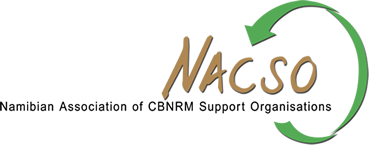
One of the Conservation Leadership Programme interns took a trip to the North Eastern regions She shares her experience from the excursion.
On 13 September 2020, I went on a field trip to Kavango East and Zambezi regions with the Business Assistant for World Wildlife Fund of Namibia. The agenda of the trip was to review the Business Financial Sustainability Plans (BFSP) and introduce Compliance Framework for some of the conservancies including the Kyaramacan Association (KA) and to take part in the Annual Game Counts. Before we embarked on the trip, we first had to get travel permits to travel to the two regions due to the COVID-19 regulations which only permitted travel out of the region for essential services.
Our first destination was Mujiku village at one of the KA’s offices in Bwabwata National Park. Although the drive was long, it was worth it. We had a two-day workshop with the KA committee members. BFSP allows the association to budget accordingly and to invest more in community benefits rather than on costs and introduce a compliance framework which summaries the contract between the conservancy and private operator. This was really an eye-opening experience for me because I become more informed on the operations of the association.
After the workshop in KA, we travelled to Mayuni and Mashi conservancies in Zambezi region. In these conservancies, we presented the BFSP that was drafted by the conservancies and the WWF Business Advisor earlier this year. The compliance framework was introduced to Mashi conservancy.
We also held various meetings with the Bamunu, Dzoti, Balyerwa, Wuparo, Mashi, Mayuni, Sobbe and Kwando conservancies in order to discuss monitoring tools such as camera traps and phone applications which would be used to monitor wildlife corridors in conservancies. I learned so much about the importance of wildlife corridors in combating Human Wildlife Conflict (HWC) and how payments from the national Wildlife Credits Fund contribute to rural development.
After we completed the monitoring tools meetings, I joined the Natural Resource Working Group (NRWG) for the annual game counts in Zambezi, which took place between September and October. On the first day of the game count we started in the Mudumu North Complex where we got lost because the route we took did not have GPS coordinates and the community game guards who were with me were not familiar with the route. We walked for about 30 km from Lizauli village in Mashi conservancy to Sobbe conservancy. After two days of counting in the Mudumu North Complex, we joined the team in the Mudumu South Complex where I saw herds of elephants. When we completed the counts in Mudumu, we proceeded to Bwabwata National Park in the Buffalo core area. The transect routes in Mudumu were longer than the ones Bwabwata and everything went according to plan, although we were almost attacked by a herd of buffalos. On that same day, we came across another herd of buffalos that also charged us, and just when we thought we were out of danger we came across a leopard. No one was harmed.
This was frightening and great experience, and I would do it again. I met a lot people and learned much about working with the community during this field trip. Now reflecting on it from the office, I am keen to go back.


